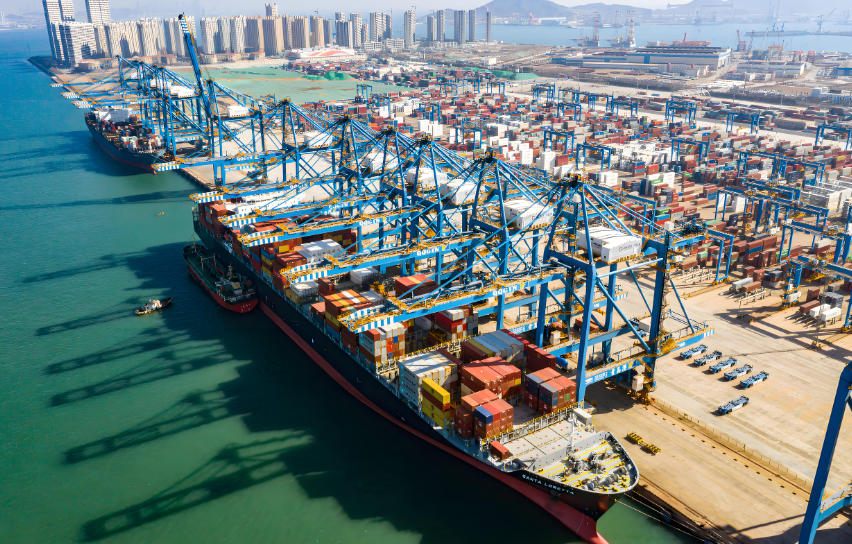How does Malaysia import work clothes from China?
Author:HAIYUAN TIME:2025-08-12Read:
Malaysian companies import work clothes from China through a structured process similar to Indonesia's, but with specific Malaysian regulations and logistics considerations. Here's a step-by-step breakdown:
1. Supplier Sourcing & Negotiation
- Platforms: Use Alibaba, Global Sources, or trade shows (e.g., Canton Fair).
- Due Diligence: Verify suppliers via:
- Business licenses (check China's AQSIQ records).
- Factory audits (e.g., SGS, BV) for social/environmental compliance.
- Sample evaluation (fabric quality, logo precision, stitching).
- Key Negotiations: MOQ (typically 100–500 units), price, lead time (30–60 days), and payment terms (e.g., 30% deposit, 70% before shipment).

- Logo/Design: Provide vector files (AI/EPS) for embroidery/printing. Specify:
- Placement (e.g., left chest, sleeve).
- Method (embroidery density, print type).
- Material Compliance: Ensure fabrics meet:
- Malaysian Standards (e.g., MS ISO 13688 for protective clothing).
- Halal certification (if required for Islamic workforce).
- Safety standards (e.g., flame resistance for industrial wear).
3. Shipping & Logistics
- Incoterms: Use FOB (China port) – supplier handles delivery to port; importer arranges sea freight.
- Freight Forwarding: Hire a Malaysia-based forwarder with China expertise.
- Sea freight: 20–35 days (China → Port Klang/Penang).
- Air freight: 3–7 days (costs 4–6x more).
- Documentation: Supplier must provide:
- Commercial invoice.
- Packing list.
- Bill of Lading (B/L).
- Certificate of Origin (COO) for ASEAN-China FTA tariff benefits.
4. Malaysian Customs Clearance
- HS Codes: Classify workwear accurately (e.g., 6211.32.00 for men's industrial uniforms).
- Duties & Taxes:
- Import duty: 10–30% (varies by material/type).
- SST (Sales & Service Tax): 10% on CIF value + duty.
- Income Tax (CIT): 0–3% for approved traders.
- Customs Broker: Engage a Malaysian licensed customs agent (e.g., from Kastam Diraja Malaysia).
- Required Documents:
- Import Permit (AP) for restricted items.
- K2 form (Customs Declaration).
- Original B/L.
- COO (Form E for ASEAN-China FTA).
5. Quality Control (QC)
- Pre-shipment Inspection: Hire third-party QC (e.g., QIMA) to check:
- AQL 2.5 for minor defects.
- Logo accuracy, sizing consistency.
- Post-delivery: Inspect goods upon arrival at Port Klang.
6. Cost Considerations
- Landed Cost =
Product cost + Shipping + Insurance + Import duty + SST + CIT + Forwarder fees.
- Example: RM10,000 CIF uniforms + 15% duty (RM1,500) + 10% SST (RM1,150) = RM12,650.
7. Regulatory Compliance
- Labeling: Tags must include:
- Fiber content (in Bahasa Malaysia/English).
- Care instructions.
- Manufacturer/importer details.
- JKOM Certification: Mandatory for safety workwear (e.g., high-visibility jackets).
Pro Tips for Malaysian Importers
Common Pitfalls to Avoid
- Under-declaring value: Risks fines/blacklisting by Kastam.
- Incorrect HS codes: Causes customs delays.
- Ignoring SST: Leads to tax penalties.
- Poor QC: Rejected shipments incur return costs.
By following this framework, Malaysian businesses can efficiently import high-quality workwear from China while ensuring compliance with local regulations and optimizing costs. Partnering with experienced freight forwarders and customs brokers is key to smooth clearance at Port Klang/Penang.

